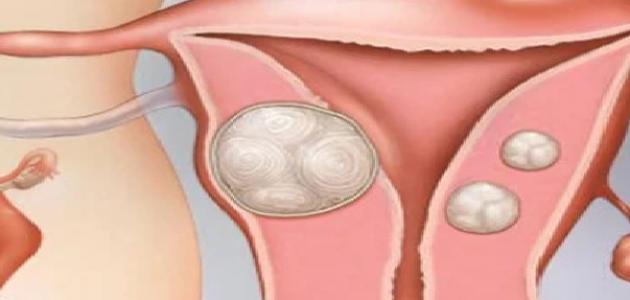Causes of menstrual progression
The reasons for the progression of the menstrual cycle can be explained in some detail as follows:
One-time menstrual irregularity
The duration of the menstrual cycle or menstrual cycle may decrease from time to time, if two cycles are completed in the same month, and then the menstrual cycle returns to its regular nature later. This is considered one of the natural disorders that may affect a woman’s menstrual cycle and which does not indicate infection. Mostly due to one of the health problems. In this case, the doctor does not prescribe any treatments for the woman unless an infection or health problem is detected that affects the regularity of her menstrual cycle.
Pills
The principle of birth control pills is to prevent the release of eggs from the ovaries to prevent pregnancy. Most of these pills contain the hormones estrogen and progestin together, or the hormone progestin only, so These pills may affect the regularity of the menstrual cycle, and when they stop using them, the menstrual cycle may continue to be disturbed and interrupted for a period that may reach 6 months. Here it should be noted that birth control pills that contain only the hormone progestin may lead to vaginal bleeding between periods of bleeding. Natural menstruation.
Read also:What is the treatment for ovarian cyst?
Thyroid disorders
Thyroid gland disorders and diseases are among the common causes of menstrual disorders in women, so any change in the pattern of the menstrual cycle, such as a decrease or increase in the duration of the menstrual cycle and the number of times it is repeated or stopped completely, or noticing a change in the bleeding pattern accompanying a period Menstrual bleeding requires an evaluation of the functions of the thyroid gland by a doctor. It should also be noted that the very early or very late start of the menstrual cycle in girls at puberty may also indicate suffering from a thyroid disorder, and the following is a statement of some of the symptoms that may Indicates an overactive thyroid gland (in English: Hyperthyroidism):
- Mood swings.
- Hand trembling.
- Fatigue
- muscle weakness;
- Nervousness, psychological anxiety, and irritability.
- Increased heart rate.
- Skin dryness.
- Weight loss.
- Disturbance and difficulty sleeping.
- Heart arrhythmia and heart palpitations.
- Hyperactivity.
- Inability to tolerate high temperatures.
Among the symptoms that may indicate hypothyroidism, the following can be mentioned:
- Constant fatigue.
- Muscle spasms.
- Inability to tolerate low temperatures.
- Brittle hair and nails.
- Dry and peeling skin.
- Weight gain.
- Muscle pain and weakness.
- Depression.
- constipation;
- Slow movement and thinking.
- Pain, tingling, and numbness in the hands and fingers.
- Menstrual irregularity and increased bleeding intensity.
- Decreased sexual desire.
Read also:When will the fever end?
uterine fibroids
Uterine fibroids, also known as leiomyomas, are the growth of abnormal tumors in the uterus, which are often non-cancerous in nature. It is worth noting that most women develop some of these tumors. In the uterus by the age of 50, the risk of these tumors forming is higher during a woman’s childbearing period. This condition is diagnosed through a pelvic examination and ultrasound imaging (in English: Ultrasound). The incidence of uterine fibroids may lead to a disturbance in the menstrual cycle. In women, in addition to the appearance of a number of different symptoms, the most common of which is severe bleeding during menstruation, and among other symptoms that may accompany uterine fibroids, the following can be mentioned:
- Frequent urination.
- Lower back pain.
- Feeling of pressure in the pelvic area.
- Pain during sexual intercourse.
- Anemia.
- Fatigue
Pre-menopausal stage
Many hormonal fluctuations occur in the pre-menopausal stage in a woman, which ultimately leads to entering the menopause stage. These hormonal fluctuations lead to a disturbance in the regularity of the woman’s menstrual cycle, including the duration of completion. Menstruation, interruption of the cycle, and disturbances in the intensity of bleeding during menstruation. The pre-menopausal stage may last for a long period of up to 10 years in some women. A woman enters the menopausal stage if a full year has passed since her last menstrual period.
Read also:How is polycystic ovary syndrome treated?
Endometriosis
Endometriosis is the abnormal growth of tissue similar to uterine tissue in the areas surrounding the uterus. The doctor may diagnose the disease by performing a pelvic examination and ultrasound imaging, but the final diagnosis of the disease can only be completed by performing a laparoscopy. (in English: Laparoscopy), through the doctor performing a simple surgical operation, and endometriosis is accompanied by a number of different symptoms, such as pain and abdominal cramping and abnormal vaginal bleeding that may be similar in severity to menstrual bleeding.
The first period of puberty
The disorder of the menstrual cycle and the difference in its duration from one month to the next is one of the very common disorders among girls in the first period of puberty. For example, a girl’s menstrual cycle may occur within 24 days in a month, while in the following month the period occurs within 42 days, and this disorder results in About the natural changes that occur in girls after puberty, and they may continue for several years before the start of regular menstruation, usually with advancing age.
Psychological tension
Psychological stress may play a role in menstrual disorders in some women, as it affects the part of the brain responsible for regulating the secretion of hormones, which in turn may lead to a disturbance in the proportion of hormones in the body and affect the regularity and duration of the menstrual cycle. Therefore, avoiding psychological stress, or Following some stress-relieving mechanisms may contribute to regulating a woman's menstrual cycle.
Sudden weight change
A sudden change in weight, whether by gaining severe weight or losing a large percentage of it, affects the regularity of the menstrual cycle, due to the changes that occur in the natural hormonal pathways when the body mass index (in English: Body mass index) or BMI for short) changes.
Causes of spotting or bleeding between periods
There are many different reasons that may lead to spotting or bleeding between periods in women, and it is worth noting that many of these reasons do not cause concern, but if you suspect a health problem, it is worth seeing a doctor to diagnose the cause of this bleeding, and among these reasons are the following:
- Using emergency contraceptive pills after intercourse.
- Some sexually transmitted infections, such as Chlamydia trachomatis infection.
- Use of hormonal contraceptives.
- Exposure to an injury to the vagina.
- Recently had an abortion.
- Vaginal dryness.
- The occurrence of some harmless changes to the cervix, such as cervical ectropion, or cervical erosion.
- Vaginal cancer, or vulval cancer.
- Endometrial polyps, or cervical polyps, are benign growths of tissue in the uterus, or lining of the cervix.
- Cervical cancer, and here it is worth noting the necessity of performing a periodic examination of the cervix, and seeing a doctor in the event of abnormal vaginal bleeding, or bleeding after sexual intercourse, especially if the woman’s age ranges between 25 and 64. years.
- Uterine cancer is one of the most common types of cancer in women after menopause, so it is worth seeing a doctor if spotting or bleeding is noticed between menstrual periods in a woman after the age of 40.
- Pregnancy, as pregnancy may cause spotting in a pregnant woman, and it is necessary to consult a doctor in this case.









